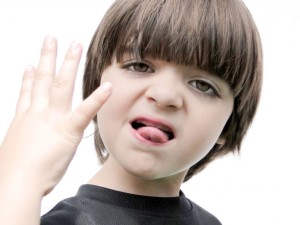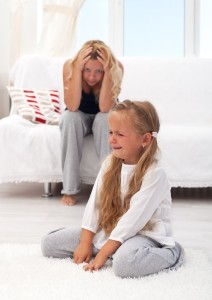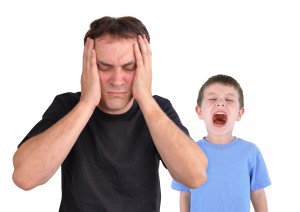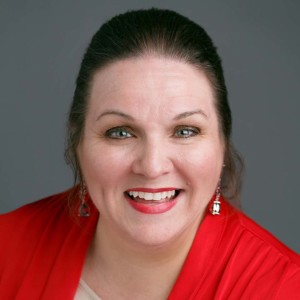Attachment Parenting: When A Hug Is More Than A Hug

by Darleen Claire Wodzenski, MA ESE, MA CMHC, QPPE, Phd Psychology

I read an interesting post today from someone promoting “Attachment Parenting”. The author suggested that parents who are angry at children who are also angry should … hug. Attachment Parenting aside, this is just a really bad idea, and here is why: Sometimes a hug is much more than just a hug. Sometimes a hug is a powerful motivator of human behavior … and hugging at the wrong moment in time can motivate the wrong behaviors and emotions of children.
Attachment Parenting reflects a notion that parents should practice some form of peaceful, sensitive, and responsive child rearing in order to promote child learning, growth, and development. The basic concept is a good one. Unfortunately, the process of raising psychologically and emotionally stable children is more complex than simply replacing anger with hugs. Attachment Parents must understand the real goals of the Attachment Development process … in order to decode what promotes Attachment formation … and understand what parental actions may interfere with desired development.
When parents start yelling at children who are already angry and misbehaving, it certainly increases the level of tension in the room. The child is likely to feel intense emotions related to the personal feelings of anger in addition to the natural stress response to the parental yelling. The child’s brain is highly stimulated during such an angry verbal exchange. The best course of action is for the parent to back off and calm down … while giving the child a chance to do the same.
 The parent who misreads this situation is going to add more stimulation to the situation by introducing still another source of stimulation – a hug. The kinesthetic tactile (touching) stimulation of the hug will set off even more neurons in the brain, further stimulating the child’s reaction to the disagreement. The child may even interpret the hug as a form of love or praise – in connection to the yelling. The result could be that the child develops a natural inner connection between anger and hugging. Parents who misinterpret the goals of Attachment Parenting often misread their children’s cues, moving in for hugs, kisses, and praise when something very different is required to help the child learn and grow.
The parent who misreads this situation is going to add more stimulation to the situation by introducing still another source of stimulation – a hug. The kinesthetic tactile (touching) stimulation of the hug will set off even more neurons in the brain, further stimulating the child’s reaction to the disagreement. The child may even interpret the hug as a form of love or praise – in connection to the yelling. The result could be that the child develops a natural inner connection between anger and hugging. Parents who misinterpret the goals of Attachment Parenting often misread their children’s cues, moving in for hugs, kisses, and praise when something very different is required to help the child learn and grow.
Childhood is the time during which children must learn to self-soothe, self-calm, and self-regulate. A yelling child should be encouraged to calm and gain composure. The hugs … which are typically a very good thing … should be shared at the moment the child gains composure … so that the child’s brain is activated to connect hugs and emotional control. This is a useful combination that will help the child navigate relationships and social situations in the future … which is a big part of why Attachment Parenting is used in the first place. Read more on Attachment Parenting, healthy Attachment Formation, and disorders of Attachment such as RAD and DSED at DarleenClaire.com.
Does this mean that we never hug children who are upset? Not exactly. Very young infants and children often need to be comforted when they are hurt, scared, or upset. As time unfolds, however, children must gain greater skills for self-regulation (learning to control their own emotions). Parents of a toddler throwing a temper tantrum, for example, will do more good for the child by ignoring the tantrum … and waiting to share hugs until after the child has regained composure.
An elementary student who is angry and defiant toward a parent must similarly be left alone to get control of raging emotions. Parents can provide some simple encouragement to assist the child in figuring out how to calm down … like saying “hey, take a breath and try to think about a way to work this out.”
Moving in to hug a defiant 8 year old is highly likely to encourage the child to repeat the behavior again and again. The child’s brain would be likely to interpret a hug during a fit of rage as a form of stimulation and praise … mismatching love and nurture with anger and defiance. We see this mismatching of emotions and behaviors in abusers, who confuse love and violence.
Instead, briefly remind the elementary age child to calm down. Provide the child with some space to figure it out. Self-calming is a skill that will be learned and improved slowly over time. When the child is successfully calmed down, take the opportunity to comment on the child’s positive choice to stop the anger and choose calmness.
 Attachment Parenting is a wonderful notion, but the Attachment Parenting strategies must mature over time as the child ages. The parents who are truly committed to raising emotionally stable, happy, and effective humans must realize that infant Attachment Parenting strategies are for infants … toddler Attachment Parenting strategies are for toddlers … and so on. As infants grow to toddlers, preschoolers, and then children, so must parents mature their approach to Attachment Parenting. Even Attachment Parenting must be developmentally appropriate for the age and maturity of the child.
Attachment Parenting is a wonderful notion, but the Attachment Parenting strategies must mature over time as the child ages. The parents who are truly committed to raising emotionally stable, happy, and effective humans must realize that infant Attachment Parenting strategies are for infants … toddler Attachment Parenting strategies are for toddlers … and so on. As infants grow to toddlers, preschoolers, and then children, so must parents mature their approach to Attachment Parenting. Even Attachment Parenting must be developmentally appropriate for the age and maturity of the child.
The effective Attachment Parent demonstrates a gentle respect for each child’s developmental process. Parents can continue to be loving and nurturing throughout childhood. Parents must also, however, begin to time the delivery of nurture and attention to coincide with children’s demonstration of social, emotional, and behavioral growth and learning. As children grow, they begin to crave the space to work through their own issues, work out their own feelings, and learn to create their own solutions in the world. Effective Attachment Parents are able to continue sensitive parenting even as their children become adults.
Attachment Parenting as a developmentally responsive child rearing strategy can be highly effective in raising stable, happy, and effective humans. No amount of hugging, however, can replace a child’s need to learn to control inner rage, disappointment, fear, and other challenging emotions. Children need a healthy and encouraging environment in which to become masterful at being happy and in control of their choices … and later their lives. When parents catch their children demonstrating developmentally appropriate emotional maturity and good discretion … then that is the time to move in for the HUG!!!
 Dr. Darleen Claire Wodzenski is a Clinical Mental Health Counselor and Special Education Professional. Read more on Parenting strategies at DarleenClaire.com and OrchardHumanServices.org. She provides parent coaching support for parents of children with Attachment Disorder (including Reactive Attachment Disorder – RAD – and Disinhibited Social Engagemnet Disorder – DSED) as well as parents of children of adoption and foster placement.
Dr. Darleen Claire Wodzenski is a Clinical Mental Health Counselor and Special Education Professional. Read more on Parenting strategies at DarleenClaire.com and OrchardHumanServices.org. She provides parent coaching support for parents of children with Attachment Disorder (including Reactive Attachment Disorder – RAD – and Disinhibited Social Engagemnet Disorder – DSED) as well as parents of children of adoption and foster placement.
Dr. Darleen Claire is the Founder and Program Developer for Orchard Human Services, Inc. … a 501(c)3 nonprofit that uplifts lives by counseling, educating & caring. She provides some direct counseling and education intervention services in the metropolitan Atlanta area including Alpharetta, College Park, Cumberland, Marietta, and Hiram. Children and families are the focus of her counseling practice; she works with children and families who are impacted by Attachment Disorder, Autism, Divorce, Loss of Parent/Caregiver, Mental Health, Trauma, Abuse, Neglect, Neurodevelopmental Challenges, Learning Problems.






